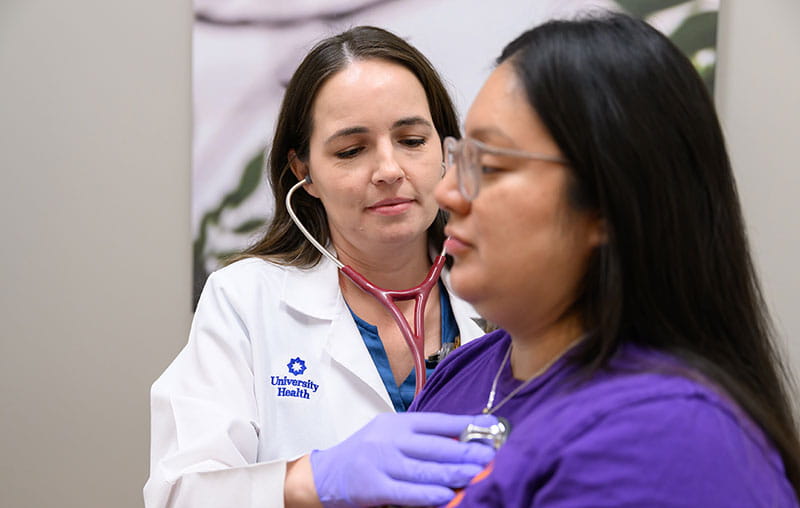According to the U.S. Department of Health and Human Services, approximately 10 million people in the United States age 50 and older have osteoporosis, a disease causing weakened bones and an increased risk of fracture. Of that number, only 2 million are men, meaning that osteoporosis in women is much more common.
Many more people in the United States have osteopenia, or low bone mass. An additional 43 million people have low bone mass, putting them at a higher risk of developing osteoporosis. That number includes 27 million women.
But why are women at a higher risk of developing osteoporosis than men? Keep reading as we explore that further.
Common Causes of Osteoporosis
Osteoporosis is what’s known as a “silent” disease, because it often creeps up without causing any noticeable symptoms until a person breaks a bone. The condition develops as bone density and bone mass decrease, weakening a person’s bones and increasing the risk of fractures.
While the primary cause of osteoporosis is the loss of bone mass and bone density, there are a number of different underlying causes that contribute to that:
Age
Our bones grow and develop until we’re approximately 25. At that point, we begin to lose bone. Bone loss accelerates as we get older — and for women, picks up significantly during perimenopause and after menopause as hormone levels fluctuate.
Hormonal Changes
For men, a drop in testosterone can lead to bone loss. Testosterone binds to androgen receptors in the body, which help to promote bone growth, so when there’s less of it, growth slows or stops.
For women, estrogen levels can dip up and down during perimenopause, eventually dropping quite low after menopause. Estrogen deficiency can lead to bone loss.
Having too much thyroid hormone can also contribute to weakening bones and bone loss.
Vitamin & Mineral Deficiencies
A diet that’s low in calcium and vitamin D can lead to bone loss. It’s important to have both nutrients since vitamin D is needed to help the body properly absorb calcium. Protein is also a necessary component for maintaining bone health.
Existing Health Conditions
Certain medical conditions can increase the risk of osteoporosis, including conditions affecting the endocrine system, immunodeficiencies, gastrointestinal diseases, rheumatoid arthritis, eating disorders, and some types of cancer.
Some medications can also cause bone loss and lead to osteoporosis. This includes drugs used to treat asthma, rheumatoid arthritis, epilepsy, acid reflux, depression, and diabetes, among others.
Excessive Alcohol & Smoking
Chronic, heavy consumption of alcohol increases the risk of osteoporosis, as does smoking. The nicotine in cigarettes slows the production of osteoblasts, the cells responsible for bone formation.
Smoking also makes it more difficult for the body to properly absorb bone-healthy calcium.
Osteoporosis Risk Factors for Women
Women have some unique risk factors that make them more likely to develop osteoporosis:
Menopause
Women can lose as much as 10% of their bone mass in the five years after menopause. That’s because estrogen levels drop off significantly, contributing to bone loss. Estrogen replacement as part of hormone therapy can help protect bones, lessen the risk of postmenopausal osteoporosis, and prevent fractures.
Lower Bone Density
In general, women have smaller, thinner bones than men do, which increases the risk of fracture. They also have other factors affecting bone density, including a lower peak bone mass and a tendency to begin losing bone at a younger age than men.
Pregnancy
Bone density can decrease slightly for women during pregnancy and while breastfeeding. Recent research, though, has shown that this temporary decrease does not increase the risk of osteoporosis later in life.
Beyond the causes outlined above, there are also some other factors that can increase a woman’s risk:
- Being slender and “small-boned”
- Being physically inactive
- Being underweight
- Being white or Asian
- Having a family history of osteoporosis or hip fracture
If you’re at a higher risk due to one or more of these factors, talk with your OB/GYN or another provider about steps you can take to protect your bones.
Women’s Health Care at the Women’s & Children’s Hospital
Find osteoporosis care at the University Health Women’s & Children’s Hospital in San Antonio.




